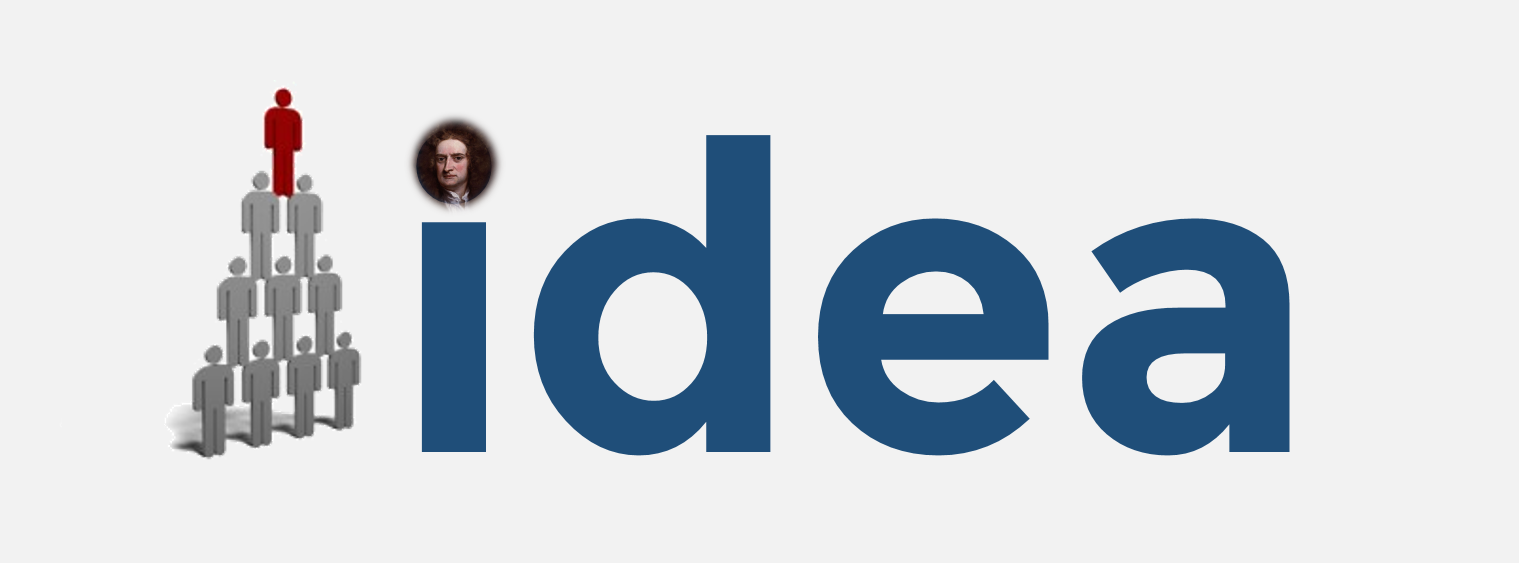SHARE
Isaac Newton vs. the crowd: An innovation story
On the contrary with what many innovation professionals might think, crowdsourcing approach to problem-solving is not something new: In fact, the invention of the first marine chronometer which dates back to 300 years ago is a successful case of crowdsourcing.
The chronometer was a long-sought-after device for solving the problem of establishing the East-West position or longitude of a ship at sea. A ship's east-west position was essential when approaching land. Typically after a long voyage, cumulative errors in dead reckoning frequently led to shipwrecks and a great loss of life.
The problem was considered so intractable, and following the Scilly naval disaster of 1707 so important, that the British Parliament offered the Longitude prize of £20,000 (the equivalent of £2.75 million today) for a solution to this issue. This outreach was particularly important because other in-house attempts had proven to be unsuccessful. For example, a host of brilliant scientists, including Giovanni Domenico Cassini, Christiaan Huygens, Edmond Halley, and Isaac Newton, had all tried to address the issue only to find out their solutions were not fully reliable.
The winning solution, one of more than 100 submissions, was an accurate chronometer that enabled the exact triangulation of location. It came from John Harrison, a carpenter, and clockmaker from the English countryside, who was eventually awarded the prize.
The story of the first marine chronometer is a reminder of the value of crowdsourcing: The impact that hidden heroes like John Harrison make sometimes lasts for generations.
After being the first man to land on the moon, Neil Armstrong visited London and 10 Dowling Street and raised his glass to John Harrison ‘the one who started us on our journey’ (See more here). Armstrong recalled how the accuracy of Harrison's device was still a story for inspiration when had been growing up in a small town in Ohio. And he remembered how he grew up knowing clocks and people like Harrison were important. Going to see Harrison's clocks in England was a journey almost as satisfying for him as going to the moon. However, the interesting aspect of Harrison's story might be a double-edged sword for crowdsourcing advocates: In spite of eventual success, it took 66 years for the Parliament to find the right solution to the challenge! Born in 1693, Harrison had basically dedicated his whole life to the creation of his new device and finally received his monetary award in the amount of £8,750 for his achievements in 1773 when he was 80 years old. He could only enjoy the large lump-sum for a few years as he passed away 3 years later. Fast forward to 2014, there are still challenges in front of companies and other organizations which might take 66 years to solve if not more. However, we can now be more optimistic about the potential outcome of crowdsourcing challenges for the following reasons: Yes, it's about the Internet: I personally don't have extensive knowledge about the crowdsourcing challenge launched by the British Parliament in the early 1700s, but I doubt they announced and promoted it around the globe. At best, the reach of this challenge would have been limited to Britain and its colonies (For a good period of time in the 1700s, the country was in war with Spain and didn't have much connection with them). Today, however, it's relatively easy to set up a contest, translate it to different languages and push it to the target audience of certain background all over the world: Who knows? You might find more than one John Harrison when you launch a campaign on a global scale. Access to additional sources of knowledge Harrison didn't come up with his final solution in one go: He did develop at least 5 prototypes taking from 3 to 17 years to complete to finally arrive at a solid design. Part of this was because of the limitations in terms of accessing the relevant knowledge sources. For example, after steadfastly pursuing various methods during thirty years of experimentation, Harrison moved to London in late 1758 where to his surprise he found that some of the watches made by the English horologist Thomas Mudge kept time just as accurately as his huge sea devices and didn't have some of the flaws he had discovered in his prototypes. Surely, the easy access to online version of scientific or professional magazines and resources would have helped him discover Mudge's solution earlier and thus save time if such type of access existed in the 18th century. Today's organizations are more proactive Harrison, during his lifelong dedication to the longitude challenge, had interactions with only few organizations and individuals: British Parliament, the King, Nevil Maskelyne (Astronomer Royal), and the Royal Society. These interactions were mostly passive in the sense that Harrison would go to the above-mentioned individuals and organizations when he had a prototype to get it tested…or he would talk to them and ask for money to further pursue his work. Nowadays, companies usually take a more active role in crowdsourcing challenges: Leading organizations in many cases provide mountains of crude data, software to use in the challenge and sometimes experts to respond and clarify the issues raised by solvers.-----
In spite of the growing list of crowdsourcing success stories, only a few companies use crowds effectively—if at all. This is partially because this way of thinking seems to be relatively new in the corporate world. It's important to keep in mind, however, that it's just the name that is new, and thanks to the power of technology, we have many advantages which can help us improve the odds. Download our Engineering Crowdsourcing white paper